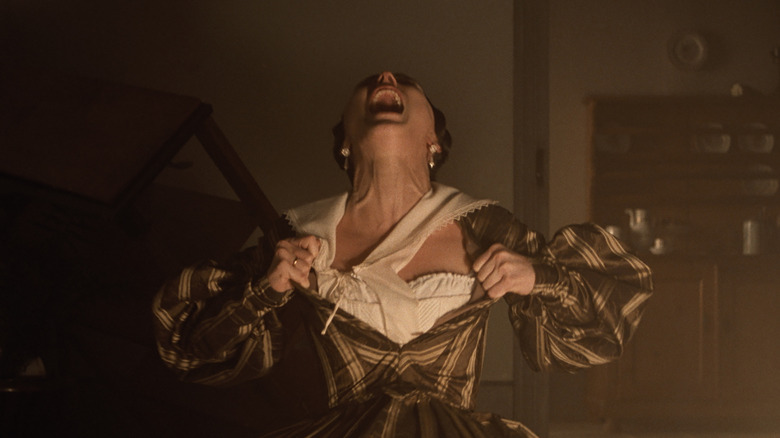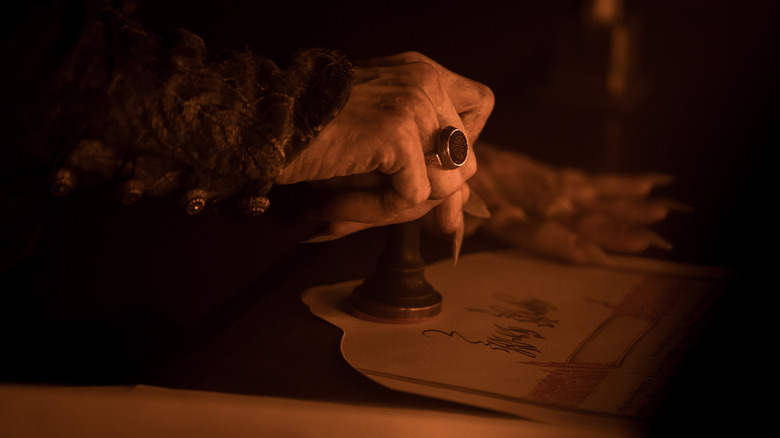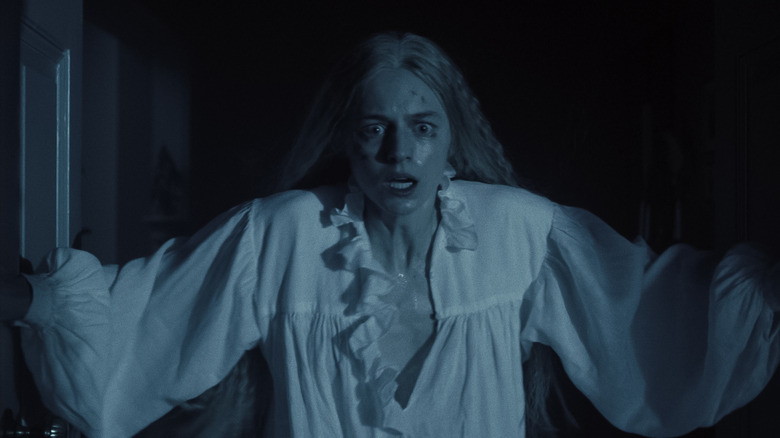
Horror is my favorite genre, but for the most part, it doesn’t scare me. I’m not boasting about how brave I am (trust me; lots of stuff scares me — I have a panic attack anytime I have to get on an airplane), but merely stating that I’ve spent so much time with the horror genre that I’ve grown desensitized to it. I still love and appreciate horror movies, but very rarely do they actually make me afraid. So when I see a horror movie that manages to get to me on a raw, primordial, emotional level, I’m impressed. And Robert Eggers’ “Nosferatu,” a new take on both “Dracula” and F. W. Murnau’s silent movie classic, seemingly achieves the impossible: it’s scary!
To be fair, horror, like comedy, is a very subjective genre. What scares one person might seem laughable to others. In my experience, a large swath of the general public associates “jump scares” with horror. I don’t want to get off on a long screed about jump scares, but I will say this: while some jump scares can be effective and impressive, a lot of filmmakers employ them in lazy, cheap ways (the most stereotypical example is when a harmless cat jumps out of nowhere, screeching and startling the characters on screen). In my humble horror movie fan opinion, jump scares are not what makes a horror movie scary. The type of fear I crave is on a more psychological, emotional level. I’m talking about dread; the unshakable feeling that something is wrong in an almost indescribable way. Japanese filmmaker Kiyoshi Kurosawa is an expert in this, and his films “Pulse,” “Cure,” and this year’s “Chime” all manage to scare me with how they create an overwhelming sense of dread.
When I sat down to watch Robert Eggers’ “Nosferatu,” I more or less knew what I was getting into. I’ve seen pretty much every single “Dracula” movie in existence, and I know the story inside and out. And sure enough, Eggers’ film doesn’t alter much, story-wise. It follows the very similar beats of both Murnau’s original and many other “Dracula” adaptations. And yet, despite my foreknowledge, Eggers’ film actually scared me. How? What’s the secret?
Nosferatu often feels like a fever dream
The key ingredient that makes Eggers’ “Nosferatu” so scary is its strange atmosphere. Working with cinematographer Jarin Blaschke (who also shot Eggers’ films “The Lighthouse” and “The Northman”), the director conjures up the vibe of a nightmare right from the jump. In a brief prologue, we watch as Ellen (Lily-Rose Depp), a young woman, is both drawn to and tormented by a mysterious, shadowy figure. We know, of course, that this figure is Count Orlok, an ancient vampire bonded by Ellen by her melancholy spirit. Eggers wisely keeps Orlok, played by an unrecognizable Bill Skarsgård, off camera as long as possible.
Before he makes his grand entrance, we follow Ellen’s husband Thomas (Nicholas Hoult) as he leaves Germany and heads to Transylvania to close a land deal with Orlok. Before reaching Orlok’s castle, Thomas stops at a local inn, where the superstitious locals mock him. He later witnesses a strange ceremony in which these locals dig up a corpse and drive a metal stake into its chest, complete with blood and gore. The moment is broken when Thomas wakes up in his bed, horrified. Was it all a nightmare? Or did he really witness this barbaric event? It’s unclear, and that’s the point. Things only get stranger and more surreal from here, as Thomas heads to Orlok’s castle in an almost daze. Snow falls, the camera swoops, and things feel positively bizarre. When Thomas finally encounters Orlok, the vampire remains mostly unseen, but we hear his deep, rumbly, guttural voice.
The scenes of Thomas at Orlok’s castle are the most effective for me. Anyone who has ever had a bad fever can likely recall the strange, off-kilter feeling it invokes. Everything you look at feels weird in some subtle way; it’s as if your brain is boiling up in your skull and frying your thoughts, causing your perception to skew. Eggers is able to recreate this very feeling as Thomas, in a kind of hypnotic daze, falls under Orlok’s spell.
Nosferatu manages to be scary even if you’re already familiar with the story
From here, “Nosferatu” grows more unsettling as Orlok heads to Germany and sets his sights on Ellen and those around her. While the story of a vampire growing obsessed with an innocent female victim is well-ingrained into horror lore, Eggers’ “Nosferatu” finds ways to add interesting twists to the formula. Ellen, a woman prone to fits, seems to believe her depressed nature has somehow conjured up Orlok; it’s as if he’s a physical representation of her troubled mind. Orlok, in turn, seems drawn to Ellen because her melancholy soul is like a kind of catnip; he can’t resist her. These two figures are locked in a kind of psychosexual drama, with Depp’s wild physical performance invoking Isabelle Adjani’s memorable work in “Possession.”
This all creates an almost smothering sense of doom in the film which is only enhanced by the cold, wintry setting (the film takes place around Christmas, and there’s even a candlelit Christmas tree in one scene). Later, when one of the film’s characters breaks open a coffin and embraces the corpse of loved one, the mood is almost too sad to bear, which only enhances the general horror.
At the same time, Eggers remembers to have a little fun with his bleak film. Nearly everything Willem Dafoe does as a Van Helsing-like vampire hunter gets a laugh, and Aaron Taylor-Johnson is drolly amusing as a man who seems incredibly annoyed that the women of the film are acting so damn hysterical about this vampire business. But the overwhelming sense of dread is what makes “Nosferatu” so effective, and as its final, haunting frames arrive, it’s hard not to be impressed with what Eggers has created.
“Nosferatu” is now in theaters.




Leave a Reply